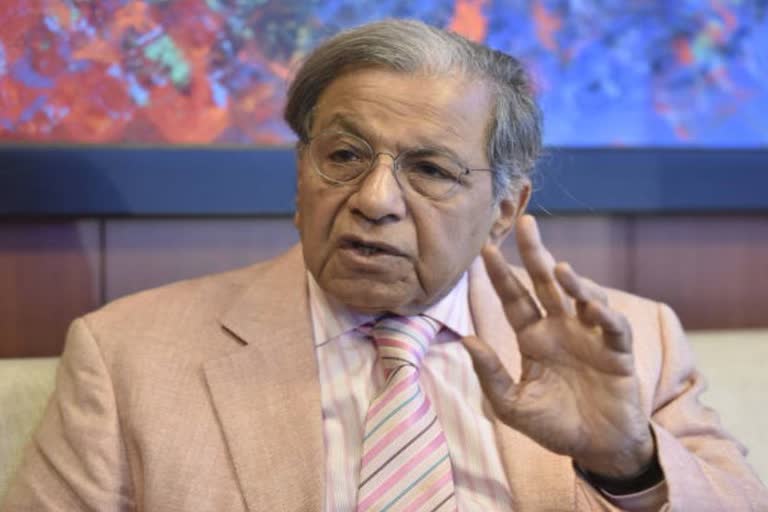New Delhi:The share of Cess and surcharges in the total revenue collected by the Centre has gone up significantly in last ten years, from little over 10% to over 16%, and States are right when they perceive it to be unacceptably high, said NK Singh, Chairman of the 15th finance commission.
In an exclusive interaction with ETV Bharat, NK Singh, however, said the Commission could not do anything about it as deciding the composition of divisible pool was outside its mandate and only Parliament can decide the issue.
Finance Commission, a constitutional body, which is constituted every five years, decides the formula to divide the money from divisible pool between the Centre and States and among the States themselves. However, the States complain that the tendency of successive Union governments to impose Cess and surcharge in the budget rather than increasing the tax rate deprives them a fair share in the revenue collected by the Central government.
Edited Excerpts:
Q: How difficult it was for you decide the formula to divide the money between the Centre and States, and among States?
A: Since the first commission, all commissions had to deal with the challenging job of dividing the resources vertically from the divisible pool between the Centre and States and also horizontally, among the states themselves.
In addition, every commission has its own unique term of reference. This time defence was included in the ToR and we are also unique as we gave the recommendations for six years.
Q: The commission was constituted in November 2017 but Covid-19 pandemic struck before you could submit report. How did you factor in the change?
A: We are victim of this global pandemic, so it needed recalibration, likely revenue buoyancy for both the Centre and States. This time we gave revenue projections for each States, the desegregated path. The likely changes in the revenue numbers and change in revenue expenditure of each state based on these unique circumstances was one type of issue.
For the first time, we have devoted an entire chapter on health in the commission report and the need to recalibrate the expenditure on health, particularly for the third tier.
We had to go back to the drawing board to redraw the fiscal and debt road map for both the Centre and states.
Q: In your report, you have taken fiscal deficit to be 6.5% but in the budget it has gone up to 9.5%?
A: The fiscal deficit numbers for the Centre look to be misaligned from the numbers projected by us. I headed the FRBM committee of 2017, its report was accepted in 2018. One area of concern for the committee and also for the Commission was the need for transparency and credibility of fiscal data.
In past, through clever financial engineering, both the states and the Centre were doing off-budget borrowing which has been adversely commented upon by all investors, rating agencies and experts. The part of the reason for this huge pumped-up figure, the figure presented by the finance minister represents greater transparency and credibility in accounting process, reckoning the true number and as a consequence, the debt.
Currently, there are serious uncertainties about the recovery process. The pandemic has not run its course. There could be serious unanticipated fiscal pressures as we get out of the pandemic.
